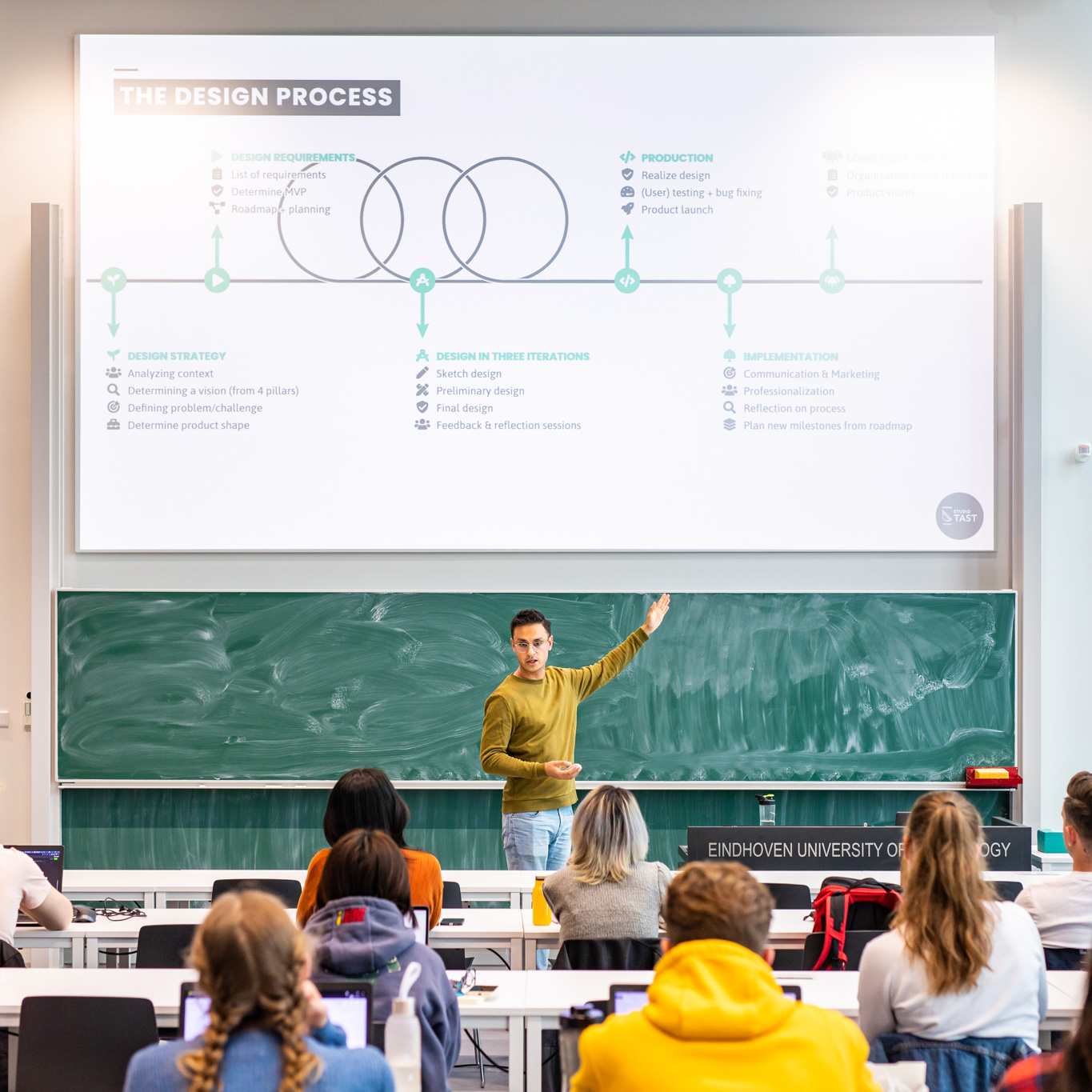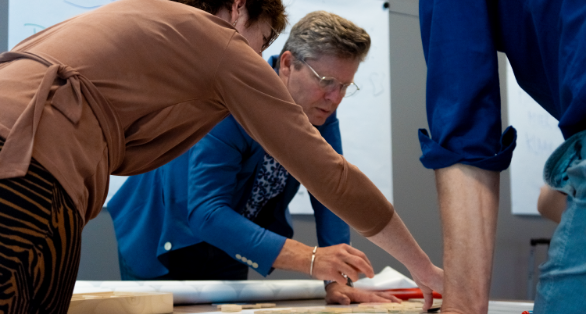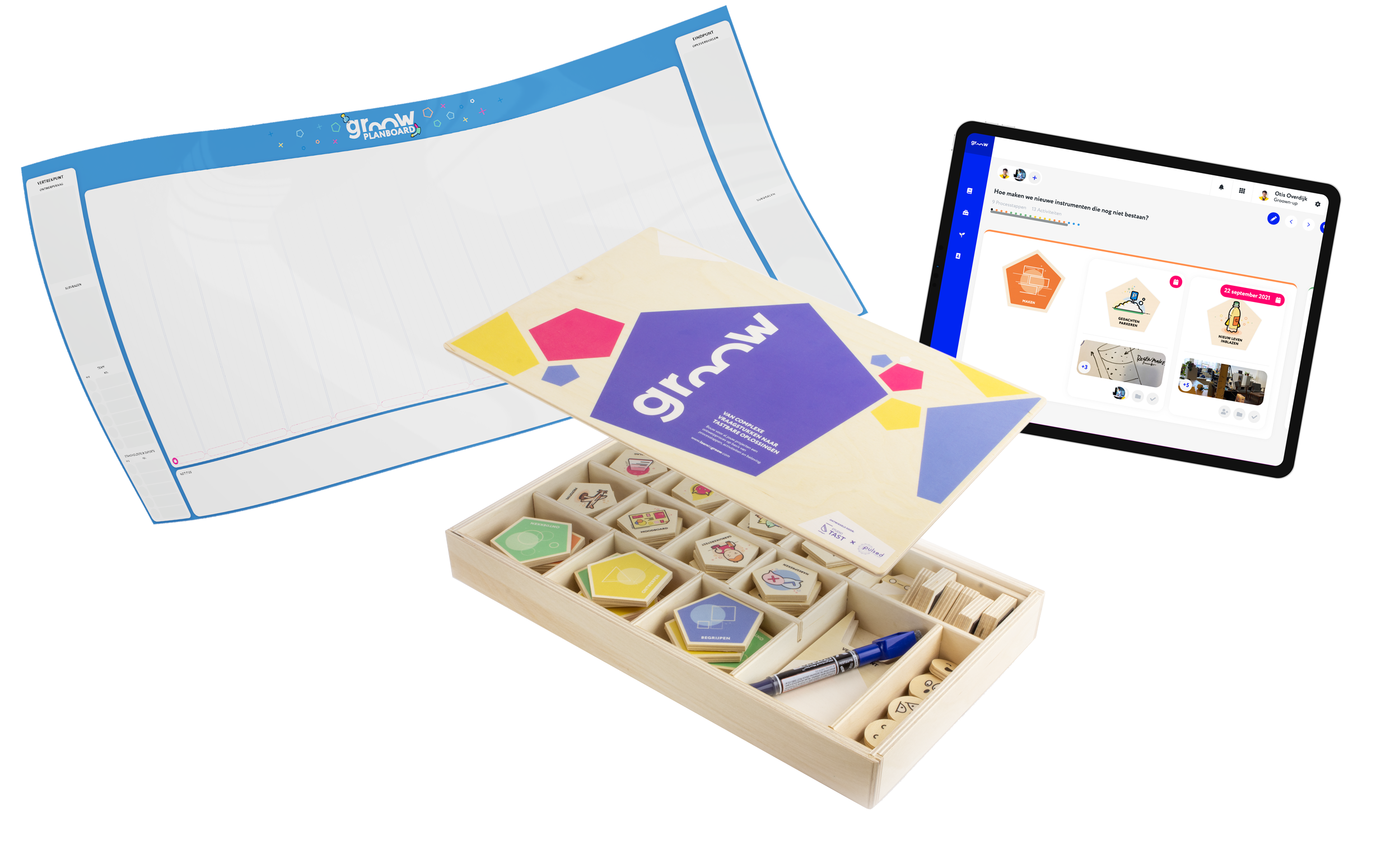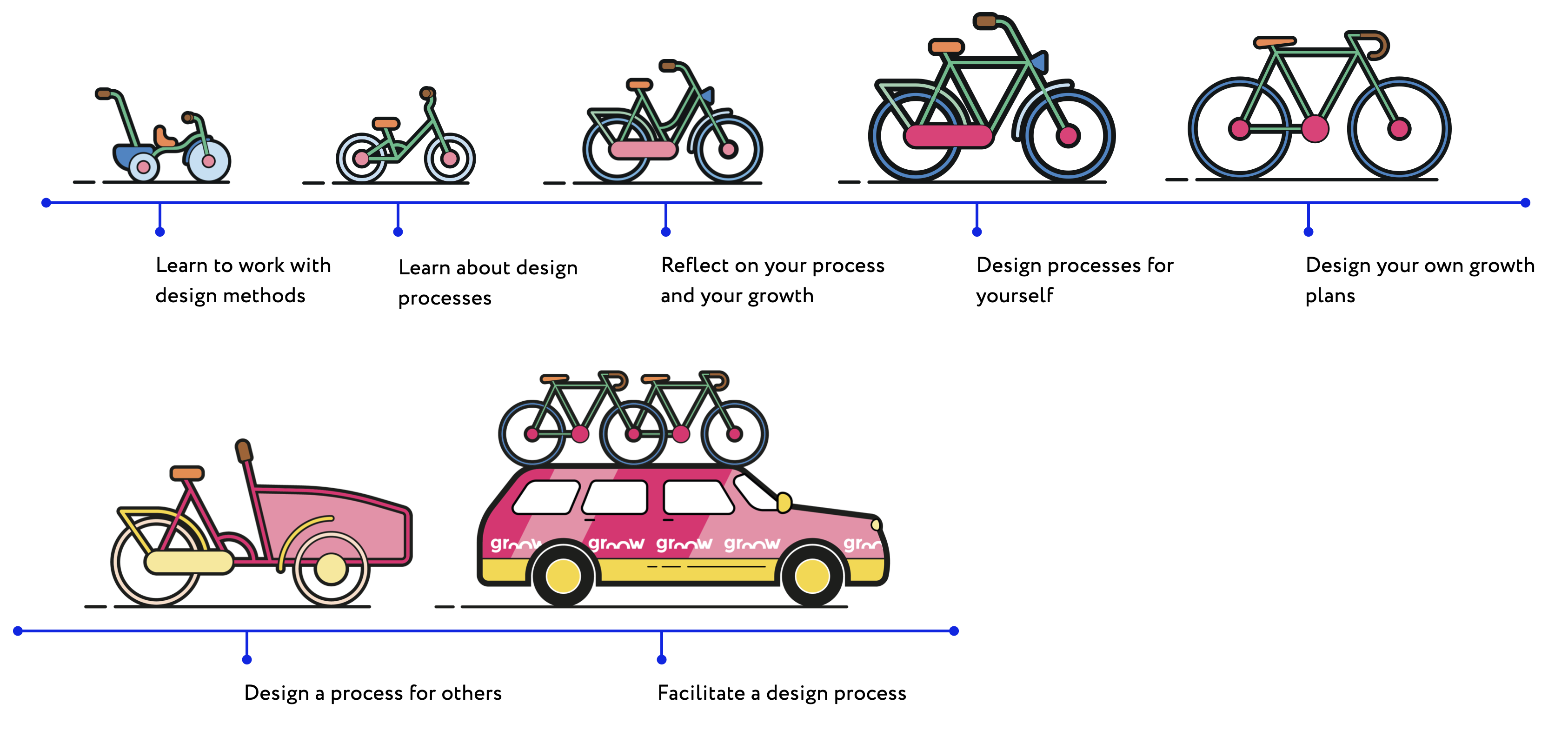No products in the cart
What is Design Based Learning?
Ontwerpend leren is de afgelopen jaren aan populariteit toegenomen. Maar wat is het en hoe is het op een goede manier in te zetten? Op deze pagina nemen we je mee in de wereld van Design Based Learning. Bekijk hier onze webinar of lees onderstaand het artikel.
Design Thinking in education
Design Based Learning finds it's origins in Design Thinking. The term Design Thinking came from the field of architecture & design and is becoming increasingly more used in other fields. Design Thinking is a creative and analytical process which creates valuable solutions through creating, human centered research and prototyping. Complex issues can be managed and gradually translated to new insights. Such a process requires an open mindset, putting your soft skills to work and being able to work, and learn, in a multi-disciplinary environment. Extremely suitable for a broader market than just the design world.
To make Design Thinking practically applicable for non-designers, we speak of:
Design Based Learning (DBL) for education
Design Based Working (DBW) for the business world


Why use DBL in education?
Today's complex challenges are opportunities for growth that require new skills, knowledge and attitudes. The design way of learning is aimed at exploring challenges within their context and looking for possible, previously unknown, solutions from the perspective of the end user. DBL activates the natural eagerness to learn and stimulates to play with new insights and apply them creatively in the real world. This motivates you to keep discovering, to learn in your own way and to take on every challenge with pleasure.
It is therefore extremely suitable for the application of project-based education. Students feel motivated and challenged to come up with innovative solutions while they are learning
What does DBL education look like?
Within DBL, the process is central and you learn to approach every challenge from a content and human-centered perspective. The process helps students to successfully work in multidisciplinary teams towards positive change in the world. The method encourages observations, discoveries, reflections, new implications, and feedback. In a group setting, open communication is used to work on the project, gradually leading to new insights. DBL helps to increase learners' motivation.
DBL is applied through five interconnected elements:
The design process.
Solution-oriented working based on soft skills
Methods
Flexible and active collaboration
Hard skills
Applying in-depth professional knowledge
Experts & context
Learning from a multidisciplinary context
Personal leadership
Professional identity development
The five DBL elements enable professionals to continue learning and developing, becoming T-shaped professionalswhere learning both breadth (soft skills) and depth (hard skills) remain important.

Role of the teacher
When implementing DBL in education, space is also created for the ongoing development of teachers. In addition to being subject specialists, teachers become DBL coaches and sometimes even co-learners.
Make it practical with the Groow method
The Groow method makes DBL practical for teaching. Groow offers structure in its elements rather than traditional linearity. Flexibility and structure, hand in hand. Without the right tooling, finding this balance is difficult because processes then remain abstract. The Groow method is made up of three tooling components:

The Groow toolkit offers teacher and student tools in designing your (learning) processes and makes coaching visual and clear.
The Groow planboard provides overview by creating a schedule in a visual tangible way. With deadlines and task assignments.
Continue digitally where you physically ended with the Groow platform.all the features you need to successfully secure DBL. Build projects, collaborate on-and share-your processes. Reflect on development and create unique portfolios.
Read all functionalities of the Groow method here.
A cross-curricular method
The five DBL elements mentioned above are independent of educational content. This makes DBL broadly applicable, from elementary schools to universities. You can think of it as learning a new language. The foundation is laid at a young age, but the complexity continues to grow throughout your life. At Groow we use five DBL growth levels and two coaching growth levels.

If you, as a team of teachers, want to professionalize in DBL, please check out our training offerings, which will teach and deepen your practical application of DBL.
Curious for more in-depth information? Please feel free to contact us or read the article we wrote together with stichting Technasium.
